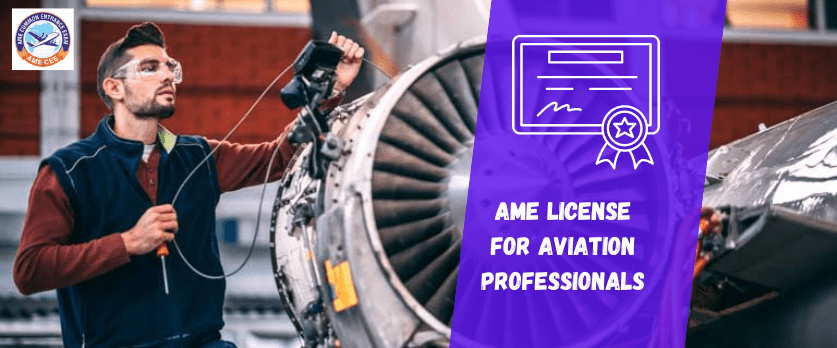An Aircraft Maintenance Engineer (AME) license is a crucial certification that allows individuals to perform maintenance, repairs, and inspections on aircraft. The issuance and regulation of AME licenses are typically overseen by aviation authorities in different countries. Below is a general overview of the AME license, including the procedures involved:
Overview
Regulatory Authority
AME licenses are regulated by the aviation authority of the respective country (e.g., FAA in the United States, EASA in Europe, DGCA in India).
These authorities set standards and regulations to ensure the competency and safety of individuals holding an AME license.
License Categories
AME licenses are often categorized based on the type of aircraft or systems an engineer is qualified to work on.
Common categories include B1 (for mechanical systems) and B2 (for avionics/electrical systems).
Procedure
Educational Requirements
Generally, individuals aspiring to become AMEs need to complete an approved Aircraft Maintenance Engineering program from a recognized aviation institute.
Training
AME candidates undergo practical training, gaining hands-on experience in maintaining and repairing aircraft.
The training period is a crucial component of the licensing process and often includes an internship or apprenticeship.
Examinations
Candidates must pass a series of written and practical examinations conducted by the aviation authority.
Examinations cover theoretical knowledge, practical skills, and regulatory compliance.
Experience
Accumulating a specified amount of practical experience is a prerequisite for obtaining an AME license.
The experience requirement may vary based on the regulations of the governing aviation authority.
License Application
After completing the required education, training, and examinations, candidates can apply for the AME license through the relevant aviation authority.
The application typically includes documentation of education, training, examination results, and work experience.
Approval Process
The aviation authority reviews the application, ensuring that all requirements are met.
Successful applicants receive their AME license, specifying the category and type of aircraft/systems they are authorized to work on.
Continuing Education
To maintain their AME license, professionals often need to undergo periodic training and education to stay updated on advancements in aircraft technology and regulatory changes.
Frequently Asked Questions Related to AME License
Q1. What is an AME License?
A. An AME (Aircraft Maintenance Engineer) license is a certification that authorizes individuals to perform maintenance, repairs, and inspections on aircraft. It ensures that professionals in the field meet specific standards set by aviation authorities.
Q2. Why is an AME License Necessary?
A. An AME license is necessary to ensure the competency and qualifications of individuals responsible for the maintenance and safety of aircraft. It is a regulatory requirement imposed by aviation authorities to uphold industry standards.
Q3. How Many Types of AME Licenses Are There?
A. AME licenses are typically categorized based on the type of aircraft systems. Common categories include B1 (mechanical systems) and B2 (avionics/electrical systems).
Q4. What Educational Requirements are Needed for an AME License?
A. Aspiring AMEs usually need to complete an approved Aircraft Maintenance Engineering program from a recognized aviation institute to fulfill educational requirements.
Q5. What is the Examination Process for Obtaining an AME License?
A. The examination process involves both written and practical exams administered by the relevant aviation authority. It covers theoretical knowledge, practical skills, and regulatory compliance.
Q6. How Much Practical Experience is Required for an AME License?
A. The required practical experience varies by aviation authority. Typically, candidates must accumulate a specified amount of hands-on experience through internships or apprenticeships.
Q7. How Long Does it Take to Obtain an AME License?
A. The duration varies based on factors such as the type of program, training, and the specific requirements of the aviation authority. It often takes several years, including educational training and practical experience.
Q8. What Types of Aircraft can an AME License Holder Work On?
A. The type of aircraft that an AME can work on depends on their license category. For example, B1 license holders can work on mechanical systems, while B2 license holders can work on avionics/electrical systems.
Q9. Is Continuing Education Required for AME License Renewal?
A. Yes, many aviation authorities require AMEs to undergo periodic training and education to stay updated on advancements in aircraft technology and regulatory changes.
Q10. How Does the AME License Application Process Work?
A. The application process involves submitting documentation of education, training, examination results, and work experience to the relevant aviation authority. The authority then reviews the application before issuing the license.
To become an aircraft maintenance engineer you may could join AME engineering through AME COMMON ENTRANCE EXAM (AME CEE) this examination you may join AME engineering approved by DGCA, EASA or UGC.


